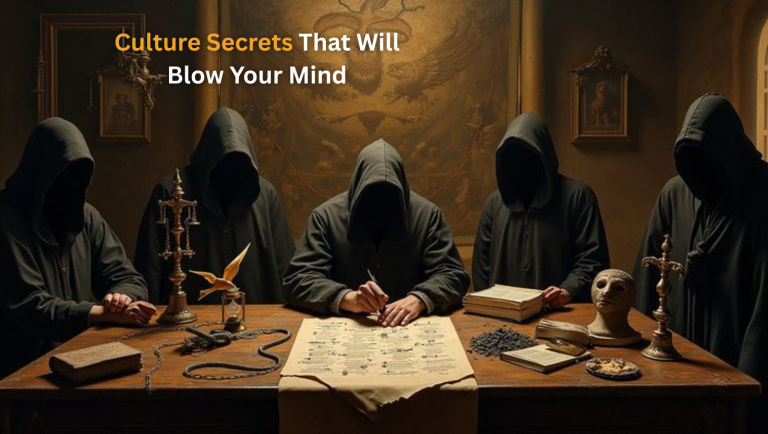When it comes to understanding the rich tapestry of human traditions, few things are as fascinating as the hidden layers of culture around the world. At omanreport, we dive deep into the stories, rituals, and secrets that shape societies in ways most people never notice. From ancient ceremonies to modern-day customs, the cultural secrets we uncover will make you rethink everything you thought you knew about the world.
Unlocking Ancient Traditions
How Rituals Define Communities
Rituals have always been at the heart of human societies. They are more than mere ceremonies; they act as glue, bonding communities through shared experiences. In some cultures, rituals mark the passage from childhood to adulthood, while in others, they celebrate harvests, victories, or spiritual awakenings.
These traditions often contain symbolism that transcends generations. For example, in Peru, the Inti Raymi festival honors the Sun God and connects modern Peruvians to their Incan ancestors. The festival isn’t just a spectacle; it’s a living reminder of history, values, and communal identity.
The Hidden Meaning Behind Festivals
Many festivals around the world carry meanings that most outsiders never realize. The vibrant colors, intricate dances, and elaborate costumes often symbolize complex narratives about life, death, and the cosmos. In India, Holi, the festival of colors, celebrates the triumph of good over evil, but its deeper roots are tied to agricultural cycles and seasonal changes.
Understanding these hidden meanings offers more than just trivia—it provides insight into the values, fears, and hopes of different societies.
Art and Its Secret Messages
Ancient Symbols in Modern Art
Art has always been a form of coded communication. From cave paintings to contemporary installations, artists embed hidden messages that reflect social commentary, political views, or spiritual beliefs. For instance, in Mexico, Day of the Dead altars use specific flowers, food, and decorations to honor deceased loved ones while conveying messages about life, death, and memory.
These secret messages in art often remain unnoticed by the casual observer. Yet, when you decode them, you gain a profound understanding of the artist’s world and the culture they inhabit.
Music as a Cultural Archive
Music is another hidden vessel of culture. Beyond entertainment, traditional music preserves languages, stories, and histories that might otherwise be lost. In West Africa, Griot musicians act as living historians, passing down genealogies and moral lessons through song. Similarly, the Andean pan flute tells stories of mountains, rivers, and ancient civilizations, connecting listeners to centuries-old traditions.
Language and Its Cultural Clues
Words That Reveal a Society’s Soul
Language is more than communication—it’s a reflection of how a society thinks, prioritizes, and interacts. Certain words or phrases exist in one culture but have no direct translation in others, revealing unique cultural concepts. For example, the Japanese word “Komorebi” describes sunlight filtering through trees, reflecting the society’s deep connection to nature.
Secrets in Dialects and Slang
Even within a single language, dialects and slang carry cultural secrets. Urban slang often emerges from social challenges, creativity, and humor, offering a window into how communities respond to changing circumstances. In Peru, regional slang varies from coast to highlands, providing clues about historical migration, trade, and cultural blending.
Food as a Cultural Time Machine
Hidden Stories Behind Traditional Dishes
Every dish has a story. Traditional recipes often carry centuries of knowledge, migration patterns, and survival strategies. Take ceviche, the iconic Peruvian dish. Its preparation not only reflects local ingredients but also the fusion of indigenous techniques with Spanish influences. Each bite is a connection to history.
Festivals and Food Rituals
Food is also central to cultural rituals. During Thanksgiving in the U.S., every dish has symbolic meaning, from the turkey representing abundance to cranberries symbolizing perseverance. Similarly, in China, Moon Festival pastries celebrate family unity and celestial mythology, showing how food conveys stories beyond taste.
Architecture and Hidden Cultural Symbols
The Stories Buildings Tell
Architecture is a silent storyteller. From temples to skyscrapers, buildings reflect cultural priorities, spiritual beliefs, and societal hierarchies. In Europe, Gothic cathedrals were designed to awe worshippers while teaching biblical lessons through sculptures and stained glass. In Peru, Machu Picchu’s design aligns with astronomical phenomena, showing the Incas’ advanced knowledge and spiritual worldview.
Modern Architecture and Cultural Identity
Even modern architecture preserves cultural identity. Designers incorporate traditional motifs, materials, and spatial arrangements to evoke memory and pride. Cities like Kyoto or Marrakech balance old and new, blending historical patterns with contemporary functionality.
Clothing and Hidden Cultural Meanings
Symbolism in Fashion
Clothing is more than protection or style—it carries cultural significance. Patterns, colors, and fabrics often denote social status, marital status, or community affiliation. In West Africa, Kente cloth colors symbolize values like peace, fertility, or leadership. Wearing specific garments is an expression of identity and belonging.
Changing Trends and Cultural Preservation
Fashion trends may shift rapidly, but traditional clothing remains a repository of culture. Festivals, ceremonies, and daily life still see people embracing garments that preserve history while showcasing regional artistry. Recognizing these patterns gives outsiders a deeper appreciation for cultural continuity.
Travel and Cultural Immersion
Experiencing Culture Firsthand
Travel isn’t just sightseeing—it’s about immersion. Visiting a country and engaging with locals allows you to uncover subtleties that guidebooks often miss. Street markets, local music performances, and family-run restaurants provide unfiltered glimpses into daily life, revealing cultural secrets you can’t find online.
Ethical Travel and Respect for Traditions
While discovering culture is exciting, it comes with responsibility. Ethical travelers respect local customs, dress codes, and social norms. Engaging genuinely with communities ensures the preservation of these cultural treasures for future generations.
FAQ,s
What is a cultural secret?
A cultural secret is a tradition, ritual, or practice that carries meaning, symbolism, or history that is not immediately obvious to outsiders. These secrets often reveal the values, priorities, and worldview of a society.
How can I learn about hidden cultural practices?
Immersive experiences, like travel, attending local festivals, engaging with artisans, and studying history, provide insights into hidden cultural practices. Reading scholarly articles and firsthand accounts also helps uncover subtleties.
Why are some cultural practices kept secret?
Some cultural practices are private to protect spiritual beliefs, preserve sacred knowledge, or maintain community identity. Others may be historically hidden to resist external influence or exploitation.
Can food and language reveal culture?
Absolutely. Traditional recipes and unique words or phrases carry stories, histories, and social values. They serve as living archives of culture, reflecting centuries of evolution, migration, and creativity.
How do festivals reveal cultural identity?
Festivals combine rituals, music, art, food, and performance, often commemorating historical events, religious beliefs, or seasonal changes. They visually and experientially display a society’s values, priorities, and communal spirit.
Conclusion
Culture is a vast, layered phenomenon that extends far beyond what meets the eye. From secret meanings in art and language to hidden stories in food, clothing, and architecture, understanding these elements allows us to connect with humanity on a deeper level. By exploring and respecting cultural secrets, we gain insight into how societies preserve identity, transmit knowledge, and celebrate life.
At perujournal.com, we continue to uncover the stories that shape the world, showing that culture is not just history—it’s a living, breathing force that inspires curiosity, understanding, and awe.


